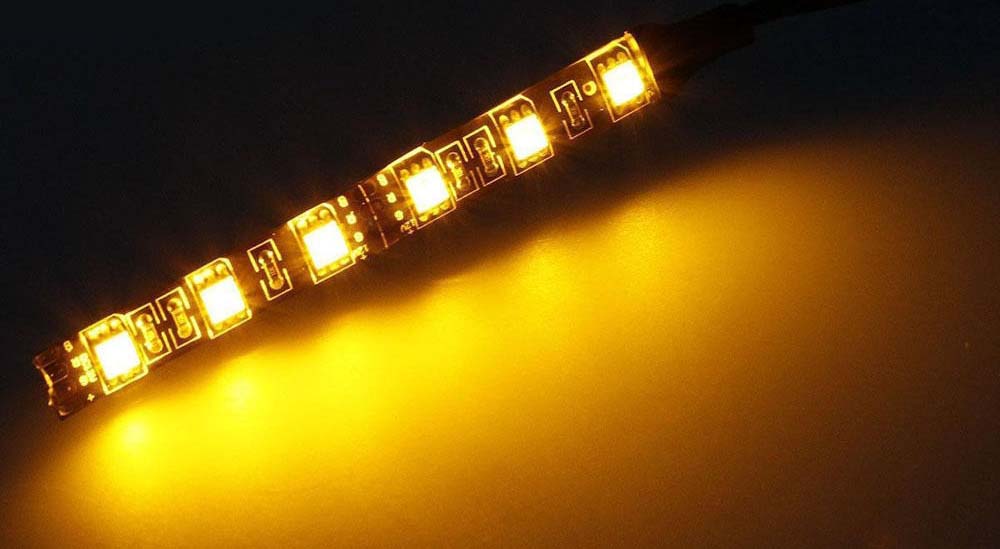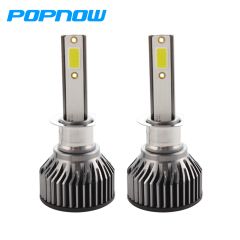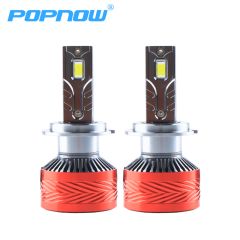Turn signals are an essential component of a vehicle. They are made up of a flasher, a turn signal switch, indicator bulbs on the dash, single or dual filament bulbs at the vehicle body corners, and an emergency flasher switch. This article will explain how signal flashers work and how to pick the right one for a turn signal with LED lights.
A simple turn signal circuit starts with the flasher, not the switch. Inside the circuit assembly is an electrical contact that carries the current into the flasher from the fuse panel. A piece of curved spring steel is joined to the electrical connection. A piece of resistance wire wraps around a smaller portion of spring steel, which is combined with a larger one.
When either a left or right turn signal is selected, the flasher electrically connects to the signal bulbs on the car, completing the circuit. The current flows through the resistance wire, causing it to heat the spring steel around which it is wrapped. In a brief period, the spring steel expands, straightening out the larger piece of spring steel. The now-straightened piece of steel is forced into direct electrical contact with the signal bulbs, bypassing the resistance wire and sending the current to the bulbs.
The bulbs turn on, but the spring steel cools quickly and curves away. This breaks the electrical contact and turns off the bulb filaments. The current goes back to the resistance wire and starts the whole process over again. The clicking noise heard when the turn signal is on is the spring steel bouncing back and forth.
The stalk on a car’s steering column acts as the toggle that moves the switch contacts to the correct position for turn indication. The switch assembly is also automatically designed to self-cancel.
The switch brings in the current from the flasher to its center contact. Once connected, the center contact can distribute the current to the right or left signals by the switch movements. When indicating a left turn, for example, the stalk is pressed down, and the switch's center contact rotates up to contact the wires leading to the bulbs on the left front, rear, and dash indicator.
Because all the aforementioned bulbs are in grounded fixtures, this completes the circuit. When this happens, the filaments glow until the flasher's internal contact breaks, at which time they turn off. As the flasher's contacts open and close, the lights turn on and off.
The emergency flasher found in cars made after 1965 isn't really extra. It's actually a switch that's wired so that it overrides the turn signal switch and delivers current to both sides of the car. It uses the existing flasher.
Using Flashers with LED Lights
Light-emitting diodes (LEDs) are used more and more in automotive lamps. They have a very long service life, extreme vibration resistance, and use considerably shallower packaging compared to other bulb-type assemblies. The implementation of LEDs for other signal functions on passenger cars is gradually increasing with the demand for technological and styling updates.
LEDs are used for flashing beacon lights on vehicles such as maintenance trucks. Formerly, traditional light sources required the engine to continue running to ensure that the battery would not become depleted if the lights were on more than a few hours. The energy-efficient nature of LEDs lets the engine turn off and the lights to continue flashing.
Mechanical flashers depend on current flow to operate. As described above, the current flows through a bimetal to complete the circuit and turn on the front and rear turn signals while heating the bimetal strip, causing it to bend and open the circuit, which makes the lights flash.
The reason most mechanical flashers can’t work with LEDs is that LEDs need a small amount of current flow, not enough to heat the internal strip and open the circuit. Many cars also have turn signals in their side mirrors to avoid drivers’ blinds spots. These mirrors contain high-intensity light-emitting diodes (LEDs), usually arranged to form an arrow that can point either left or right. The LEDs are positioned behind the mirror glass so that from inside the car, the driver sees only a dimly lit arrow, but outside the car, other drivers see a very bright arrow.
There are several kinds of electronic flashers. However, not all can be used for LED applications. Flashers that are just electronic rather than mechanical are often used for trucks that have multiple flashing lights. Another category is an electronic flasher with a ground wire for LEDs. Usually, the ground connection is at fault when they won't work correctly.
There are several advantages to using LEDs. They are incredibly bright and produce very little heat or current draw. Because of these advantages, several aftermarket manufacturers have started creating LED direct-fit lamp assemblies and LED replacement bulbs that can be used in place of the typical 1157 bulbs.
these types of lamps draw minimal current and do not generate the heat that’s needed to "make or break" the circuit in a standard bi-metal flasher can. If there is an incandescent bulb somewhere in the circuit that is trying to flash, a standard flasher unit might work. The solution to this problem is the installation of a no-load LED flasher can into the flasher system.
Summary
This article presents an understanding of turn signal flashers for LED lights. For more information on related products, consult our other guides or visit the Thomas Supplier Discovery Platform to locate potential sources of supply or view details on specific products.






